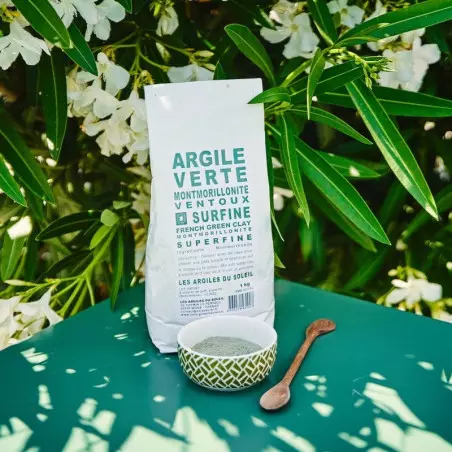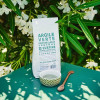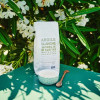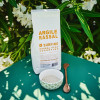The beautiful days are back, and with them, the risk of sunburn. Fortunately, the Nature offers us effective and natural solutions to soothe our skin. In this article, we will explore the benefits of poultices for treating sunburns, an age-old method that has proven effective. Learn how to care for your skin in a natural and gentle way.
After reading this article, you will know:
- Why poultices are effective against sunburn,
- What natural ingredients to use for your poultices,
- How to prepare and apply a soothing poultice,
- Precautions to take for optimal use.
Why choose poultices in case of sunburn ?
Faced with the discomfort of a sunburn, the use of natural poultices offers a gentle and effective alternative to relieve and repair the skin. These traditional preparations, particularly those Based on clay, are recognized for their therapeutic virtues, thanks to their soothing and restorative properties. Unlike conventional treatments that may contain chemicals, poultices harness the power of natural ingredients to promote healing in harmony with nature.
The benefits of clay for burned skin
Clay stands out for its exceptional properties, making it an ideal ally against sunburn. Here is why it is particularly effective:
Anti-inflammatory and healing properties
- Soothing of irritated skin : When applied as a poultice, clay helps reduce inflammation, thereby relieving the sensation of heat, while also alleviating burns and tightness.
- Absorption of impurities : She purifies the skin and accelerates the healing process.
Cell renewal
- Repair of damaged skin : By promoting cell renewal, clay helps prevent the formation of blisters or scars.
- Natural solution : Using clay in the after-sun care offers an alternative that respects skin balance, without chemicals.
Types of clay and their benefits
The different types of clay, such as themontmorillonite clay, have unique mineral compositions that enhance their benefits for the skin. To learn more about the specificities of montmorillonite clay and its applications, you can consult our dedicated product sheet:
By integrating clay In your after-sun care routine, you choose a natural and gentle approach that respects your skin and the environment.
Anecdotes and surprising facts
- Clay throughout history : Used for centuries, clay was already valued by ancient civilizations for its healing properties.
- Scientific studies : According to a study published in the "Journal of Clinical and Aesthetic Dermatology"Clay shows notable effectiveness in treating skin irritations (Reference: Journal of Clinical and Aesthetic Dermatology, 2020).
By choosing clay For your after-sun care, you choose a natural and effective product while supporting a respectful approach to your well-being and the environment.
The effectiveness of natural ingredients
Natural poultices are a treasure trove of benefits for skin damaged by the sun, and their effectiveness lies in the synergy of the components they contain. Among the most sought-after ingredients, thealoe vera is distinguished by its moisturizing and repairing properties. This gel, extracted directly from the plant, is rich in vitamins and enzymes which promote cell regeneration, instantly soothing the burning sensation.
Thecoconut oil, on the other hand, is another valuable ally. Thanks to its nourishing fatty acids, it forms a protective barrier on the skin, helping to retain moisture and prevent flaking. In addition to soothing, it provides softness and suppleness to the skin, transforming the poultice into a true cocooning treatment.
These natural ingredients work in harmony to maximize the effectiveness of poultices. When combined, they create an alchemy that not only soothes but also repairs and protects the skin sustainably. This synergy helps to accelerate the healing process while minimizing the risks of irritation or side effects, which is often the case with certain chemicals.
Adopting simple and natural ingredients for your after-sun care is a step towards a routine that is more respectful of your skin and the environment. This holistic approach is not only beneficial for your skin health, but it also fits into an ethical and sustainable approach.

How to prepare a soothing poultice ?
Create a soothing poultice to relieve bruises sun is a simple process that combines natural ingredients to provide immediate relief to irritated skin. The goal is to maximize the benefits of each component for a reparative and hydrating action. This guide accompanies you step by step in the preparation of this nurturing remedy, allowing you to take care of your skin while respecting your natural and ethical philosophy of life.
Necessary ingredients
To concoct a soothing and effective poultice against burns caused by sun exposure, a few well-chosen natural ingredients are sufficient. Here is the list of essential elements and the importance of opting for quality products:
- Montmorillonite clay : This ingredient is at the heart of your poultice. Choose a montmorillonite clay in powder form, of superior quality, rich in natural actives, and known for its anti-inflammatory and healing properties. It helps to soothe and purify the skin while promoting cell renewal.
- Aloe vera gel : Renowned for its moisturizing and healing properties, aloe vera is essential. It instantly soothes the burning sensation and supports the regeneration of skin cells, helping to maintain healthy skin while providing freshness and comfort.
- Lavender floral water Optional but valuable, lavender floral water is distinguished by its soothing properties. Lavender aspic, renowned for its anti-inflammatory properties, is particularly effective in relieving burns and skin irritations. True lavender, on the other hand, is valued for its relaxing and healing properties, promoting relaxation and skin repair. Together, they offer relaxing and anti-inflammatory properties while enveloping your senses with their delicate fragrance.
- Coconut oil : Rich in nourishing fatty acids, the oil of Coconut completes the poultice wonderfully. It forms a protective barrier that retains moisture, thus preventing flaking and providing unparalleled softness.
It is crucial to prioritize ingredients sourced from organic farming to maximize the benefits of your preparation and minimize your exposure to pesticides and other harmful chemicals. This attention to quality ensures not only effective care but also an environmentally friendly gesture. By opting for natural ingredients, you are making an informed choice that aligns with a philosophy of life that respects your well-being and the planet.
Preparation steps
Creating a soothing poultice, a typical homemade cosmetic preparation, is a simple and quick method to effectively relieve a sunburn caused by exposure to the sun. ultraviolet rays. Here is how to proceed:
- Prepare the clay : In a glass or ceramic bowl, mix about two tablespoons of powdered clay with filtered water. Gradually add the water until you obtain a smooth and homogeneous paste. Ensure that the consistency is neither too liquid nor too thick, so that it can be easily applied to the skin.
- Add aloe vera : Incorporate a tablespoon of aloe vera gel into your mixture. This gel is crucial for its moisturizing and soothing properties, which will help calm the burning sensation. Mix gently until the gel is well integrated into the clay.
- Incorporate the coconut oil : Add a teaspoon of virgin and organic coconut oil. This oil nourishes and protects the skin, forming a barrier against dryness. Mix well to ensure the oil is evenly distributed in the poultice.
- Optional - Add a complement : If you wish, you can add a few drops of lavender essential oil for its calming and healing properties. Make sure to mix well.
- Rest of the mixture : Let the poultice sit for a few minutes. This allows the ingredients to bind well together and optimize their effectiveness.
By following these steps, you will prepare a poultice that not only soothes but also nourishes and protects your skin, while respecting both your health and the environment. This gentle and natural care method fits perfectly into a routine dedicated to well-being and the preservation of our ecosystem.

Application and precautions for use
To maximize the benefits of your soothing poultice, correct application is essential. Careful application not only alleviates symptoms; it also optimizes the penetration of active ingredients into the skin, thus ensuring maximum effectiveness while respecting your well-being. By following the appropriate steps, you can transform this treatment into a restorative and relaxing ritual, while taking care to avoid irritations or undesirable reactions.
How to apply the poultice
To apply your poultice effectively, start by gently cleaning the affected area with cool water to remove any impurities accumulated after sun exposure. Then, using a spatula in wood or with a spoon, generously spread the mixture on the sun-reddened skin, forming a thick layer about 5 mm thick. Let the poultice work for 20 to 30 minutes maximum, the time it takes for the clay to dry and absorb the residual heat from the burn. Once the time has passed, rinse with lukewarm water without rubbing, then gently dry the skin with a clean towel. Repeat the application two to three times a day depending on the severity of the burn.
Precautions to take
When using a poultice to relieve a sunburn caused by UV exposure, it is crucial to take certain precautions to ensure your safety and maximize the benefits. Before applying the poultice to a large area, perform a tolerance test. Apply a small amount to a discreet part of your skin and wait 24 hours to ensure no allergic reaction occurs. This is particularly important if you have included essential oils in your preparation, as they can be irritating for some sensitive skin types.
Avoid applying the poultice on damaged skin, especially in the case of open wounds or blisters, as this could worsen irritation or delay healing. If you notice signs of infection or skin deterioration, stop using the poultice immediately and consult a healthcare professional.
To maintain the effectiveness of your preparation, keep the remaining mixture in an airtight container in the refrigerator, and use it within a few days of its preparation. This prevents bacterial growth and ensures that the properties of the ingredients remain intact.
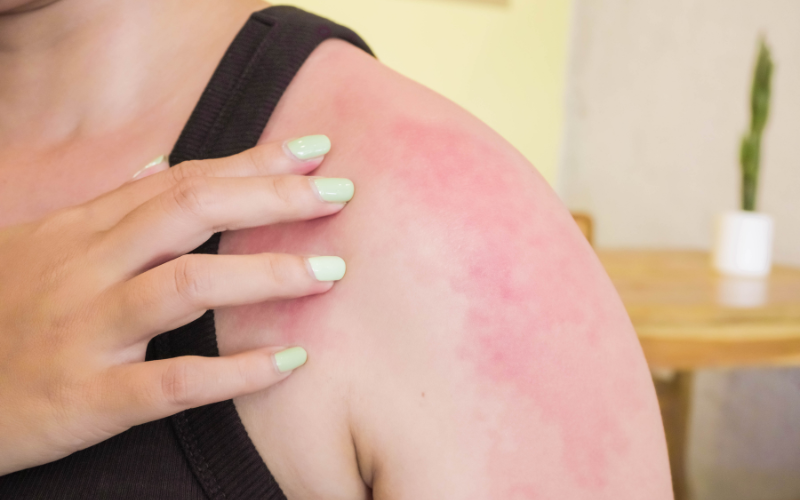
Conclusion
In the event of sunburn, whether caused by moderate exposure under a mild sun or by a more intense burn due to severe sun, natural poultices prove to be an effective and gentle solution to soothe and repair the skin. Thanks to ingredients like clay, aloe vera, and coconut oil, these home remedies not only soothe inflammation but also promote cell renewal for gentle and quick healing. By choosing to treat your burns with poultices, you opt for a method that combines care and respect for your well-being, while steering clear of the chemicals often found in conventional treatments.
Adopting these natural solutions for your after-sun routine also means embracing a care philosophy that values simplicity and harmony with nature. To continue discovering tips on natural well-being and enriching your living diet, feel free to subscribe to our newsletter. Join an engaged community that shares your passion for a healthy and ethical life.
Your questions and our answers (FAQ)
Why use a poultice to relieve a sunburn?
Poultices are a natural and effective solution for soothing sunburns. In particular, clay-based poultices have anti-inflammatory and healing properties that help calm the burning sensation and promote cell regeneration. Unlike chemical treatments, the use of poultices respects the natural balance of your skin.
What ingredients are recommended for preparing a poultice after a sunburn?
To concoct a soothing poultice, you will need montmorillonite clay, aloe vera gel, and coconut oil. The clay is ideal for its purifying and healing properties, aloe vera for its moisturizing and repairing effect, and coconut oil for its ability to nourish and protect the skin.
How to apply a poultice effectively against sunburn?
Gently clean the affected area, then apply a generous layer of the poultice on the skin. Leave it on for 20 to 30 minutes so the clay can absorb the heat and relieve the inflammation. Then rinse with lukewarm water and gently dry. Repeat two to three times a day depending on the severity of the burn.
What precautions should I take when using a clay-based poultice?
Before applying to large areas, perform a tolerance test on a small area to detect any allergic reaction. Avoid using on open wounds or blisters. Store the mixture in a cool place in an airtight container. In case of a skin reaction or doubt, consult a healthcare professional.
What are the benefits of clay for treating sunburns?
Clay is known for its anti-inflammatory and healing properties. It helps reduce inflammation, soothes irritated skin, and promotes cell renewal, which can prevent the formation of blisters and scars. Studies, such as the one published in the "Journal of Clinical and Aesthetic Dermatology" in 2020, confirm its effectiveness in treating skin irritations.
Are there other natural ingredients recommended in addition to clay for after-sun care?
Yes, aloe vera and coconut oil are excellent complements. Aloe vera hydrates and repairs, while coconut oil nourishes and protects. A lavender floral water can also be added for its relaxing and anti-inflammatory effects. These ingredients, combined with clay, maximize the effectiveness of the poultice.
Why prioritize organic ingredients for preparing a poultice?
Using organic ingredients minimizes exposure to pesticides and undesirable chemicals, ensuring care that is respectful of your skin and the environment. This approach not only ensures the effectiveness of the poultice but also aligns with an ethical and sustainable approach.



